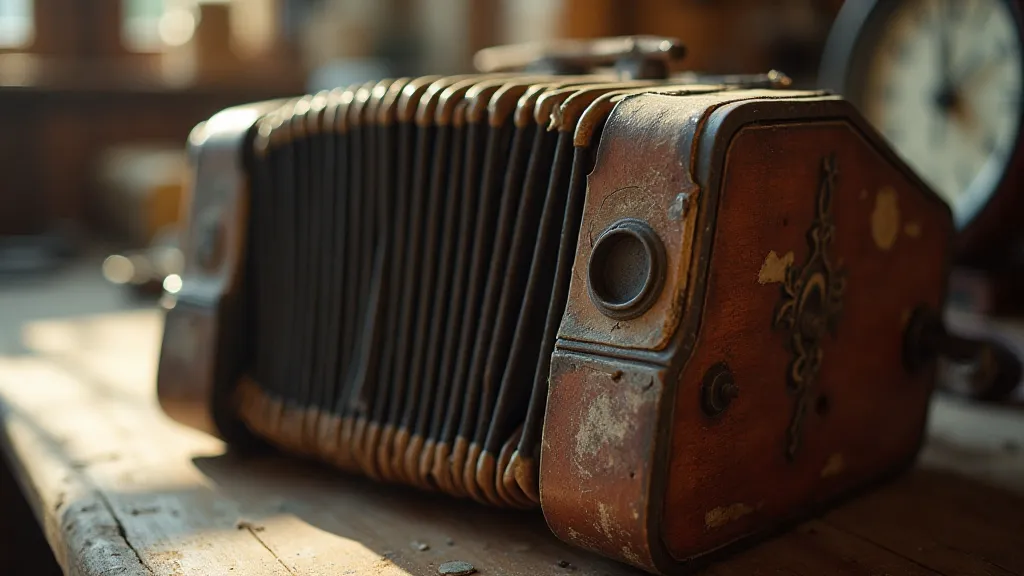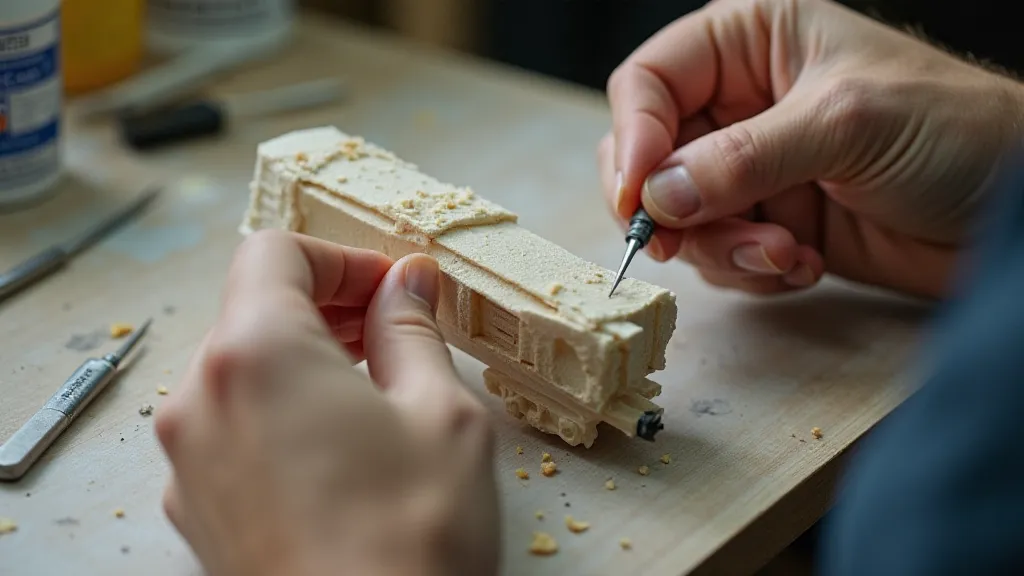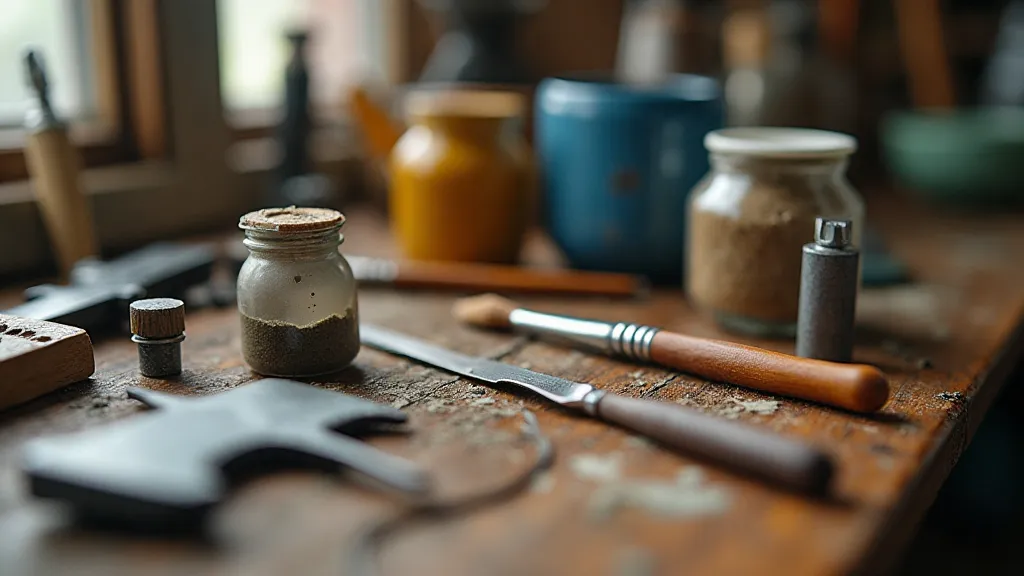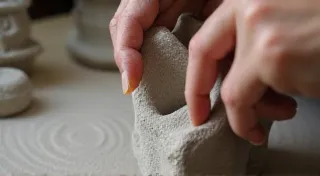Whispers in the Rails: Crafting Narrative Dioramas
The miniature railway hobby, for those of us who’s taken it beyond the initial thrill of seeing trains circle a loop, isn't merely about recreating a scene. It's about breathing life into a world, evoking a feeling, and telling a story. And the truest expression of that lies within the creation of narrative dioramas. Think beyond the static landscape – imagine a place where the rust on a railcar suggests a long-forgotten line, where a slumped figure beside a coal pile implies a hard-worn life, and where the faint glow of a depot window hints at late-night travelers.
My fascination with narrative dioramas, I realize now, stems from an early obsession with my grandfather's attic. He was a collector of…everything. Amongst the dusty furniture and forgotten toys was a collection of antique accordions. Each one, a beautifully crafted object, spoke volumes. The chipped enamel, the worn bellows, the intricate carvings – they weren't just instruments; they were vessels of memory. I’d spend hours imagining the hands that played them, the melodies they produced, the stories they told. The accordions weren’t just objects; they were time capsules, each possessing a faint echo of its past. And that’s what I strive for in my dioramas: to capture that same evocative power.

The Foundation: More Than Just Scenery
Too often, “miniature railway scenery” gets equated with simply applying flocking and static grass. While those elements are crucial, they’s merely the canvas. The *narrative* is what elevates a diorama from a pretty picture to an immersive experience. Consider the stories you want to tell. Is it a bustling industrial yard in the 1940s? A lonely logging camp nestled in the mountains? A small-town depot awaiting a late-night passenger train? The theme dictates every decision, from the track layout to the weathering on the rolling stock.
Think about the people who lived and worked in that environment. What were their lives like? What challenges did they face? These details, however subtle, will inform your choices in terms of building materials, landscaping, and the placement of figures and details. A weathered depot, with peeling paint and boarded-up windows, suggests abandonment and hardship. A tidy, well-maintained yard conveys prosperity and care. Even the choice of tree species can contribute to the story – a gnarled pine might evoke the harshness of a northern forest, while a lush maple suggests a more temperate climate.
The Art of Weathering: Telling a Visual History
Weathering isn's about indiscriminately applying rust and grime. It’s about understanding how elements interact with materials over time. A railcar exposed to harsh coastal conditions will weather differently than one that spent its life in a protected railyard. Observe real-world examples – study photographs of abandoned buildings, decaying machinery, and rusting vehicles. Pay attention to the patterns of corrosion, the accumulation of dirt and debris, and the subtle changes in color caused by exposure to sunlight and rain.
A subtle application of washes and dry brushing can breathe life into even the most pristine models. Using pigments to simulate rust, soot, and dirt, allows you to tell a visual history of each piece of equipment. Consider the angle of the sun, prevailing wind direction, and local industrial conditions. A locomotive constantly hauling coal will have a different appearance than one that transports luxury goods. There’s an elegance in restraint – a little goes a long way in creating a convincing illusion of age and wear.
N Scale Track Planning: Embracing the Challenge
The constraints of N scale track planning can be both frustrating and liberating. The limited space demands meticulous planning and a creative approach to maximizing visual impact. Forget sprawling yards and multiple mainline tracks; focus on creating a sense of density and activity within a confined area. Utilize vertical space – elevated tracks, tunnels, and bridges can create a sense of depth and complexity. Consider using curved platforms and angled buildings to add visual interest. The challenge of fitting everything into a small area often forces you to prioritize and make thoughtful decisions, ultimately resulting in a more compelling and dynamic layout.
Remember that realism isn’s always about perfect scale accuracy. A slightly oversized building or a strategically placed figure can create a focal point and draw the viewer’s eye. Embrace the challenge of working with limited space – it’s an opportunity to showcase your creativity and ingenuity.
Scratch Built Train Cars: The Ultimate Expression of Craftsmanship
While pre-built models have their place, the ultimate expression of narrative diorama creation often lies in scratch-building your own train cars. This isn’s merely about creating a perfectly scaled replica; it’s about imbuing each piece with your own unique vision and character. It allows you to incorporate specific details that tell a particular story – a unique load on a flatcar, a distinctive paint scheme on a boxcar, or a specialized piece of equipment on a work train.

Scratch building provides complete control over the design and detailing of each piece. You can incorporate subtle imperfections and unique features that add character and realism. It’s a process that requires patience, skill, and attention to detail, but the rewards are well worth the effort. The sense of accomplishment that comes from creating something entirely from scratch is truly unparalleled.
Railroad Detailing Guide: The Importance of the Small Things
It’s often the smallest details that truly bring a diorama to life. Think about the seemingly insignificant items that would have been present in a real-world railroad environment: discarded tools, piles of coal, barrels of oil, stacks of lumber. These details, however small, add layers of realism and depth to the scene. A single figure slumped against a building can suggest a long and arduous workday. A scattering of spilled grain on the ground can hint at a recent accident. It’s these seemingly minor elements that draw the viewer in and create a sense of immersion.
Don’s overlook the importance of signage. A faded billboard advertising a local business, a hand-painted warning sign, or a simple destination marker can add a touch of authenticity and character to the scene. Consider the type of font and style that would have been used at the time period you’re depicting. Even the placement of trash cans and debris can contribute to the overall narrative.
Model Railroading Troubleshooting: Avoiding Common Pitfalls
Creating compelling narrative dioramas is a process of continual learning and refinement. Be prepared to experiment, make mistakes, and learn from your experiences. Don’t be afraid to try new techniques and approaches. And be open to feedback from others. Remember that perfection is an illusion. What matters most is that you’re creating something that you’re passionate about and that tells a story that resonates with you.
One common pitfall is to overdo the weathering. A little bit goes a long way. It’s better to err on the side of caution. Another common mistake is to neglect the human element. Don’t forget that railroads are about people. Even a small, carefully placed figure can add a great deal of character to a scene.

Creating narrative dioramas is more than just a hobby; it’s a form of storytelling. It’s a way to breathe life into a miniature world and evoke emotions in those who experience it. It’s a journey of creativity, skill, and passion. And like my grandfather's accordions, it’s a way to preserve and celebrate the stories of the past.





